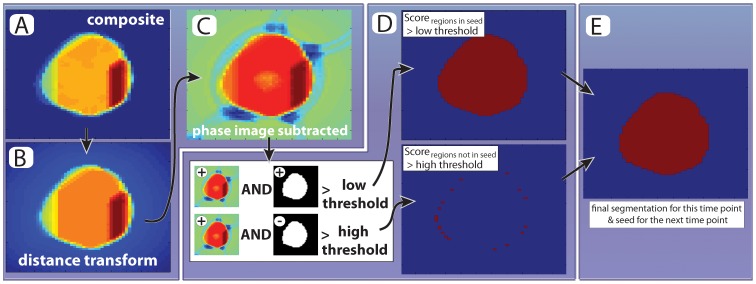Figure 4. Final image thresholding.
(A,B) First, we use the seed image to calcuate the euclidean distance from each non-cell pixel to the nearest cell-pixel and subtract it from the composite image (cf Figure 3e). This penalizes cell movements between frames. (C) The phase image multiplied by a constant is subtracted from the distance transformed image shown in B. (D) The intensity of each pixel from (C) is normalized and compared to a pair of thresholds. There are two conditions under which a pixel is assigned as part of the cell: (i) If the value is higher than the low threshold AND present in the seed or (ii) If the value is higher than the high threshold regardless of wheather the pixel is present in the seed. (E) All pixels fulfilling the two conditions are included in the final segmentation. Note that by allowing for ‘new’ pixels to be included in the cell, albeit at a higher threshold, we fulfill the need to balance changes in cell volume and slight cell movements with robust segmentation.

